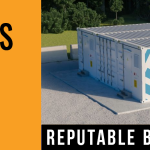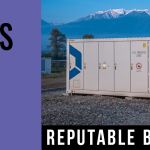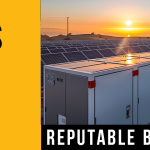 The $2 million contract is part of the DoE’s FY2018 SETO funding programme and will develop a best-in-class next generation heliostat design, optimised for CSP technology projections of the next decade.
The $2 million contract is part of the DoE’s FY2018 SETO funding programme and will develop a best-in-class next generation heliostat design, optimised for CSP technology projections of the next decade.
SolarReserve is partnering with South Africa’s Stellenbosch University and New Mexico based Sandia National Laboratories to conduct research and development.
The aim is to be able to use storage to store solar energy to meet peak demand periods, even at night.
Heliostats are the dual-axis solar tracking mirrors that concentrate and focus the sun’s energy onto an energy collection receiver atop a central tower.
Within the receiver, fluid flows through piping that forms external walls; this fluid absorbs the heat from the concentrated sunlight. In SolarReserve’s technology, the fluid utilised is molten salt, which is used both as a heat transfer fluid, as well as a thermal energy storage medium.
Kevin Smith, SolarReserve’s CEO, said: “We are excited to participate in this initiative and aggressively drive innovation that will lower delivered cost of solar electricity that has the added benefit of round-the-clock availability through energy storage.
“Through this award, we can develop breakthrough solutions for cost-effective sustainable energy now and for the generations to come – with the goal of fostering new industries and creating thousands of U.S. jobs.”
The heliostat field can account for up to 50% of a CSP project’s capital cost, hence it is a critical component in any cost reduction initiatives.
read more
 ‘Europe’s largest’ energy storage pilot project at an industrial site, combining 2MWp of rooftop solar with a total of 4.2MWh of energy storage across a lithium-ion battery system and two flow batteries has been inaugurated in Belgium.
‘Europe’s largest’ energy storage pilot project at an industrial site, combining 2MWp of rooftop solar with a total of 4.2MWh of energy storage across a lithium-ion battery system and two flow batteries has been inaugurated in Belgium. The idea is simple. A team headed by Franz Georg Pikl, a Ph.D. student at the Institute of Hydraulic Engineering and Water Resources Management at TU Graz, has combined the advantages of pumped storage technology and heat storage using water as a medium to create a “hot-water pumped storage hydropower plant.” The new system stores and supplies electricity, heat and cooling energy as required.
The idea is simple. A team headed by Franz Georg Pikl, a Ph.D. student at the Institute of Hydraulic Engineering and Water Resources Management at TU Graz, has combined the advantages of pumped storage technology and heat storage using water as a medium to create a “hot-water pumped storage hydropower plant.” The new system stores and supplies electricity, heat and cooling energy as required. Europe’s largest industrial
Europe’s largest industrial  The U.S. residential energy storage market
The U.S. residential energy storage market  Researchers in Akron, Ohio, are filling silos with sand in hopes it might lead to the next breakthrough in energy storage.
Researchers in Akron, Ohio, are filling silos with sand in hopes it might lead to the next breakthrough in energy storage. French power giant EDF has acquired a 50% stake in the Togo-focused unit of off-grid renewable energy specialist BBOXX, with EDF adding its financial clout to speed up solar home system deployments and its technical expertise to improve the energy storage offering.
French power giant EDF has acquired a 50% stake in the Togo-focused unit of off-grid renewable energy specialist BBOXX, with EDF adding its financial clout to speed up solar home system deployments and its technical expertise to improve the energy storage offering. CMI Energy, part of Cockerill Maintenance & Ingénierie (CMI) Group, has opened an industrial energy storage facility called the Micro Réseau Intégré Seraing (MiRIS) in Seraing, Belgium.
CMI Energy, part of Cockerill Maintenance & Ingénierie (CMI) Group, has opened an industrial energy storage facility called the Micro Réseau Intégré Seraing (MiRIS) in Seraing, Belgium. SERAING, Belgium — CMI Energy, part of
SERAING, Belgium — CMI Energy, part of  A new-build school in the northern coastal suburbs of Perth, Western Australia, has become the first in Australia to be powered 100 per cent by rooftop solar and battery storage.
A new-build school in the northern coastal suburbs of Perth, Western Australia, has become the first in Australia to be powered 100 per cent by rooftop solar and battery storage.



